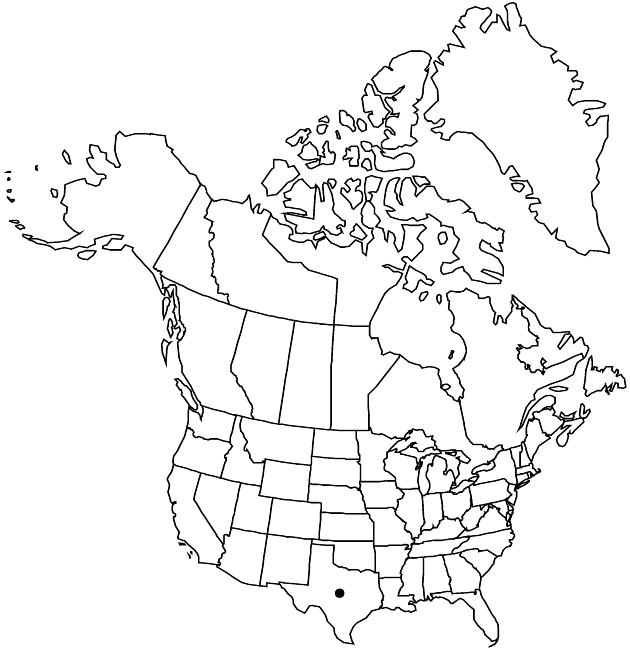Parthenium argentatum
in W. H. Emory, Rep. U.S. Mex. Bound. 2(1): 86. 1859.
Shrubs, 30–100+ cm. Leaf-blades lanceolate to oblanceolate, 15–25 (–40+) × 6–15 (–25+) mm, margins mostly entire, some with 1–2 (–5) sharp teeth, faces densely strigillose (gray to white) and obscurely or not at all glanddotted. Heads radiate, in glomerules of 3–5+ at ends of ± ebracteate stalks 8–15 (–20+) cm. Peduncles 1–2 (–6+) mm. Phyllaries: outer 5 oval-elliptic, 2.5–3+ mm, inner 5 ± orbiculate, 3.5–4 mm. Pistillate florets 5; corolla laminae ovate, 1.2–1.5 mm. Disc-florets 20–30+. Cypselae ± obovoid, 2.5–3 mm; pappuslike enations 2 (–4), erect to spreading, ± subulate, 0.3–0.8 mm. 2n = 36.
Phenology: Flowering Apr–Jun.
Habitat: Calcareous soils
Elevation: 1000–1500 m
Discussion
Guayule has sometimes been used for commercial production of natural rubber. Hybrids between Parthenium argentatum and P. incanum have been noted.
Selected References
None.
